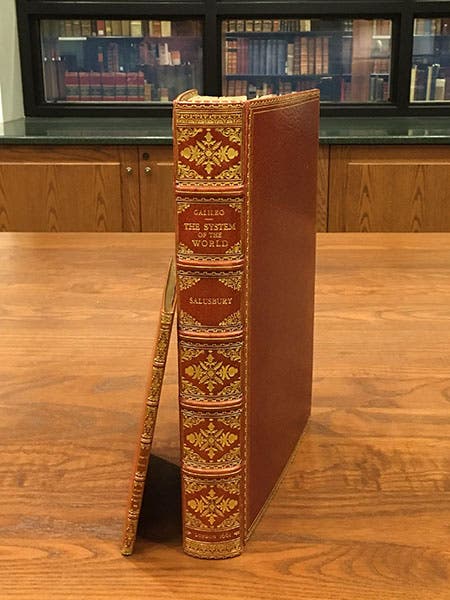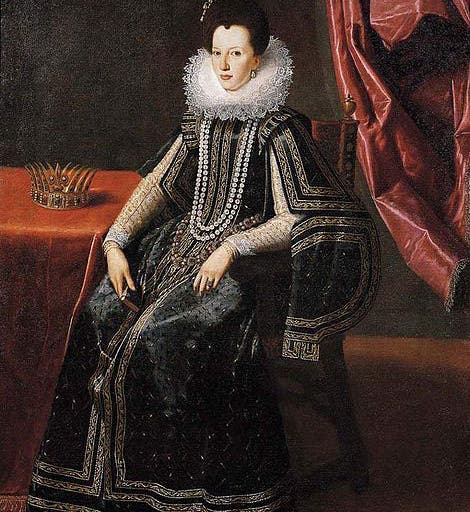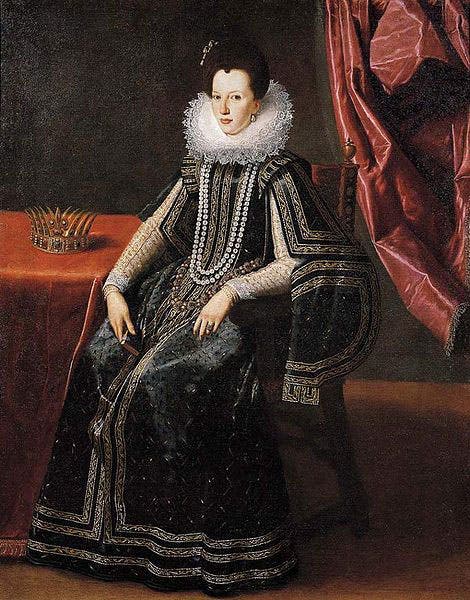Scientist of the Day - Christina of Lorraine
The Grand Duchess Christina of Lorraine was born Aug. 16, 1565. Christina was the grand-daughter of Catherine d’ Medici, and she re-cemented her ties to the family in 1589, when she married Ferdinando I de’ Medici of Florence in a lavish wedding. Christina hired Galileo Galilei, then at Padua, to tutor her eldest son, Cosimo II, and when Christina’s husband died in 1609, Cosimo succeeded him as Grand Duke of Tuscany, and Christina stayed on at the court. Galileo gave Cosimo the telescope with which he discovered the four moons of Jupiter in 1610, naming them the “Medicean stars” in his honor. After Galileo joined the Medici court, he became well acquainted with the Duchess (who was actually a year younger than Galileo), and on several occasions she asked Galileo how the Copernican idea of a moving earth could be compatible with those passages of Scripture that discuss a fixed earth and a moving sun. In response, Galileo wrote, in 1615, what is usually called the Letter to the Grand Duchess Christina, in which he suggested that the language of the Bible was written to “accommodate” the understanding of the ordinary person and was not intended to be taken literally. He further argued that the Bible was intended to indicate the road to salvation, and was not meant to provide instruction in natural philosophy.
This letter circulated in manuscript and was brought to the attention of Cardinal Bellarmine, the principal theological advisor to the Pope. Bellarmine ruled that accomodationism was acceptable when one could prove that the Bible had to be read some way other than literally, but first you needed proof, and Galileo had no proof that the earth moved. Therefore scriptural passages suggesting a fixed Earth should be read literally. A committee then pronounced in 1616 that Copernicanism was heretical, and Copernicus’ book On the Revolutions (1543) was, for the first time, placed on the Index of Prohibited Books. Galileo’s trial was still 16 years away, but the stage had now been set, thanks to the Letter to Christina.
The letter to the Grand Duchess was not printed until 1636, three years after Galileo’s sentence and abjuration, and then it had to be published in Strasbourg, since Galileo was forbidden to publish in Italy. The letter was published in its original Italian accompanied by a Latin translation, running side by side on the same page. The title, in Latin, was a long one, which we truncate here: Nov-antiqua sanctissimorum patrum, & probatorum theologorum doctrina, de Sacrae Scripturae testimoniis …, which roughly translates as Ancient and New Doctrines of the Holy Fathers and Approved Theologians concerning the Testimony of Holy Scripture… (second image).
Twenty-five years later, Thomas Salusbury included an English translation of the Letter to Christina in his Mathematical Collections and Translations (1661), which also included the first English translation of Galileo’s Dialogue. We show here the title page, so you can see the full translation of Galileo’s long title (third image). And because our copies of these two books are so handsome, even though both have been rebound, and because the 1636 edition is so tiny and the 1661 Salusbury is such a behemoth, we snapped a shot of the two together, like Pantagruel and one of his pilgrims, with the Salusbury on the right.

Dr. William B. Ashworth, Jr., Consultant for the History of Science, Linda Hall Library and Associate Professor, Department of History, University of Missouri-Kansas City. Comments or corrections are welcome; please direct to ashworthw@umkc.edu.









